Working with databases is a valuable skill that can be useful in many areas. In this guide, you will learn how to create your first database in Microsoft Access and perform basic steps to work with tables and forms. Let’s get started and design your first database!
Key Insights
- You can quickly create a new database in Access.
- It is important to save the database file correctly to avoid data loss.
- Tables and forms are central elements of any database in Access.
- A good naming and structuring of fields facilitates the later use of the database.
Step-by-Step Guide
To create your first database, follow these steps:
First, you need to start Microsoft Access and create a new folder for your projects, if you haven't done that already. To do this, open Access and click on the button "New Blank Database". This sets the first step into the world of databases.
Now a dialog box opens where you can choose the location of your new database. It is advisable to create a separate folder for your databases to better organize future projects. Name the folder something like "Databases".
Now it’s time to give the new database a name. Click on the field for the file name and name your database "My First Database". Make sure that in "Save As" you also have the option to select different file types. For the beginning, choose the standard Access database.
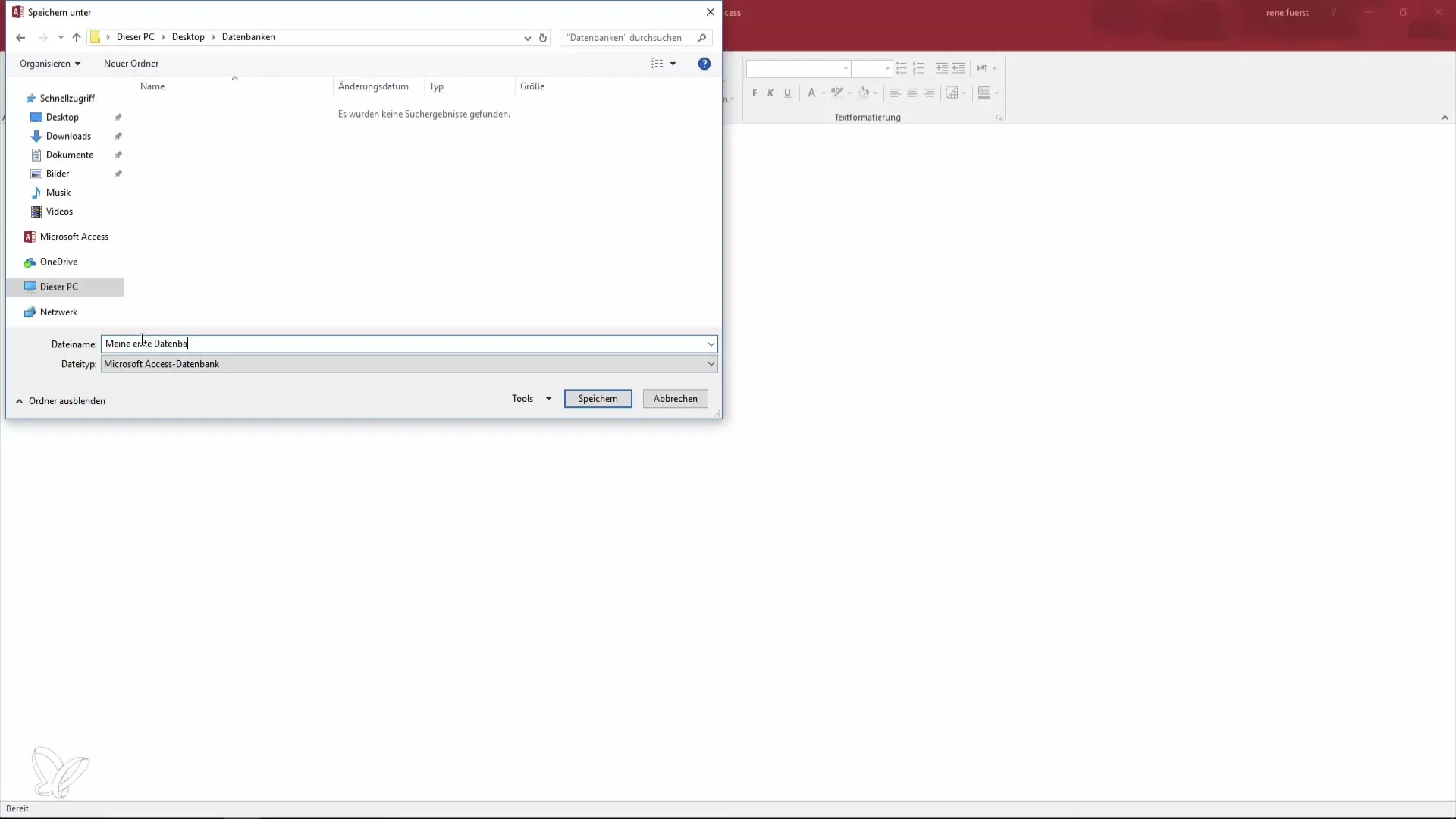
Once you click "Save," you will receive a security warning informing you that some content is disabled. This content will be enabled when you manually allow it. Click "Enable" so that the database functions properly.
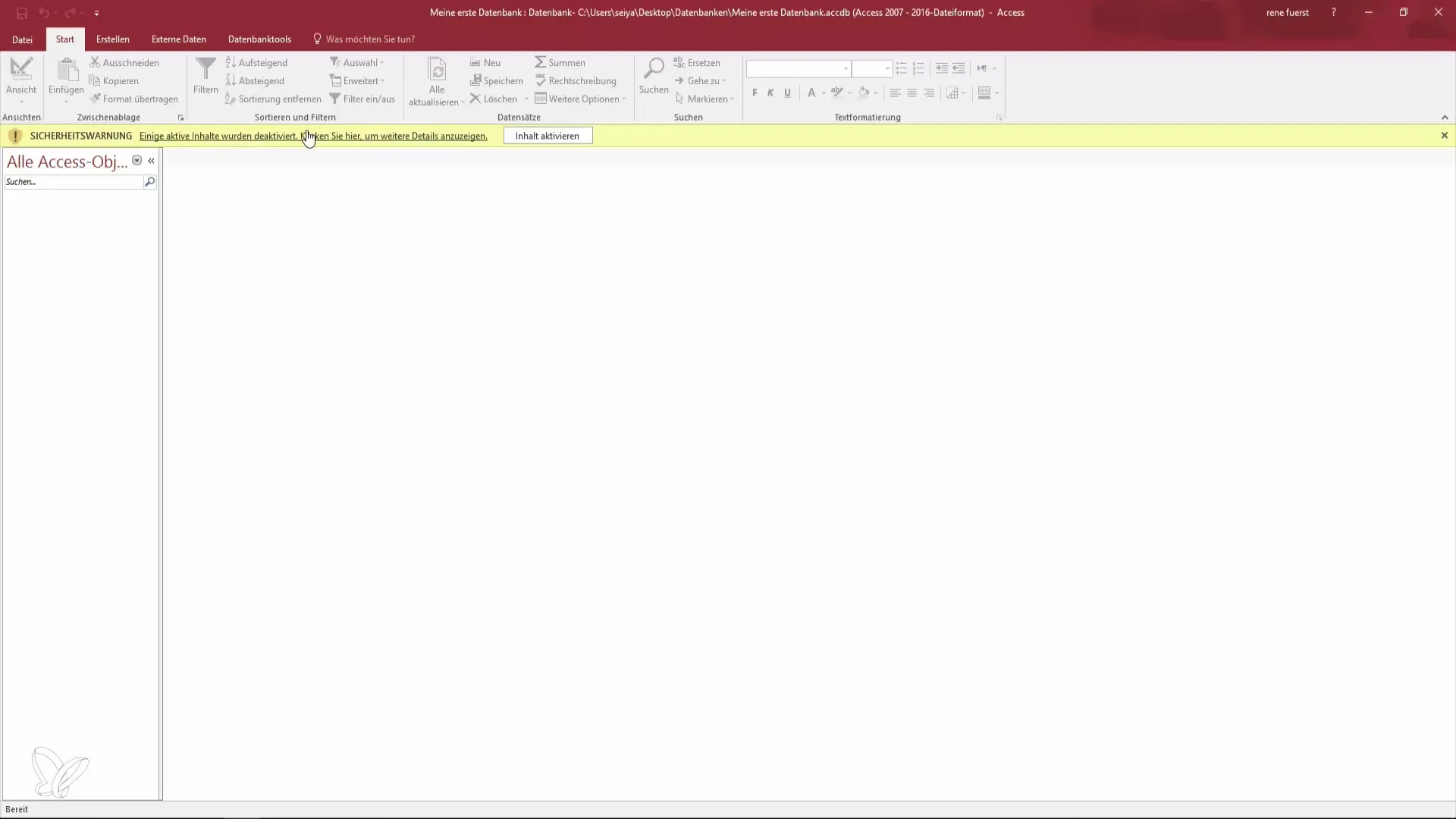
Now you will see the empty database interface. It contains no tables or forms. To create a table, go to the "Create" tab and click "Table." Access will automatically generate a table with an ID column that is generally used for identifying records.
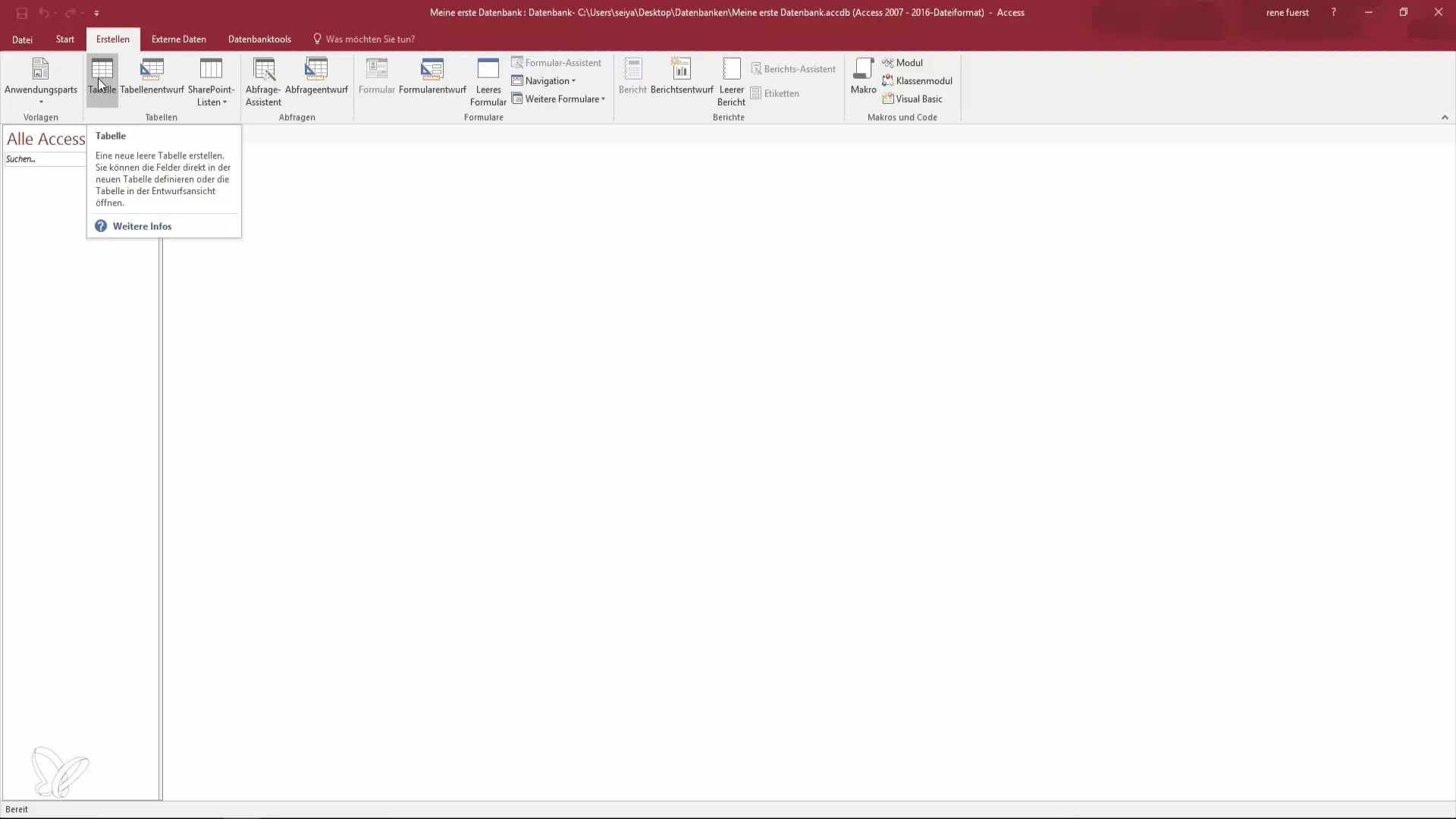
Now add your first fields. After clicking "Add," you can create a field for the first name, for example. Click "Add" again and then set the field for the last name. This way, you quickly create a simple table with the required fields.
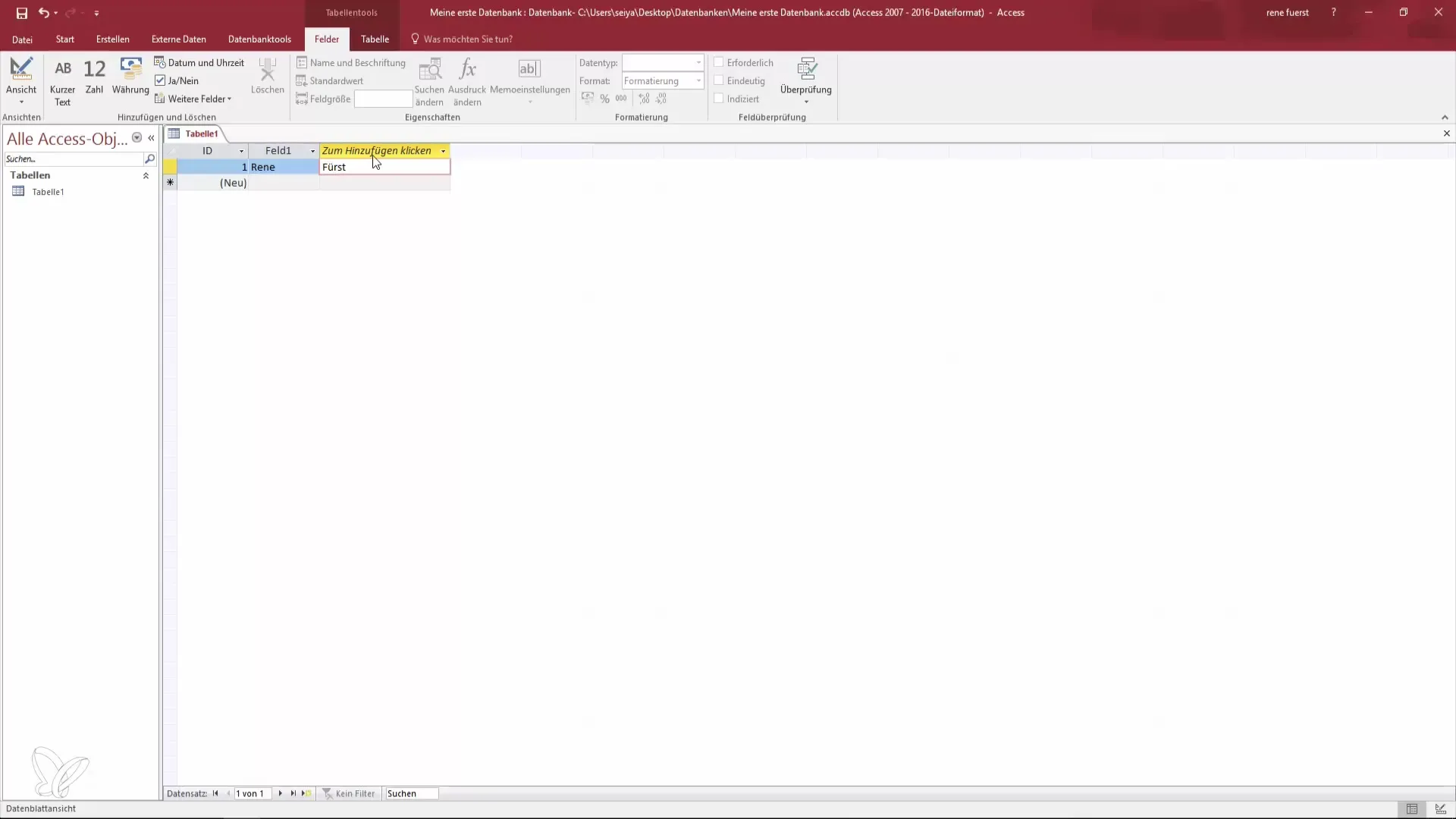
If you want to change the column names, you can now switch between the datasheet view and the design view. In the design view, you have the option to adjust the field names for better clarity.

After naming the field names, you can save the changes. Make sure to save regularly to avoid data loss, especially when working on large projects. Press the shortcut "Ctrl + S" to save the table.
Now close the table by clicking the cross in the top right corner. This only closes the table and not the entire database. To close the database completely, use the "X" in the upper right corner of Access.
When you reopen Access later, the last used database will be displayed directly so you can quickly access it. To make it easier to use, you can also add search bars to quickly find your objects as the number increases.
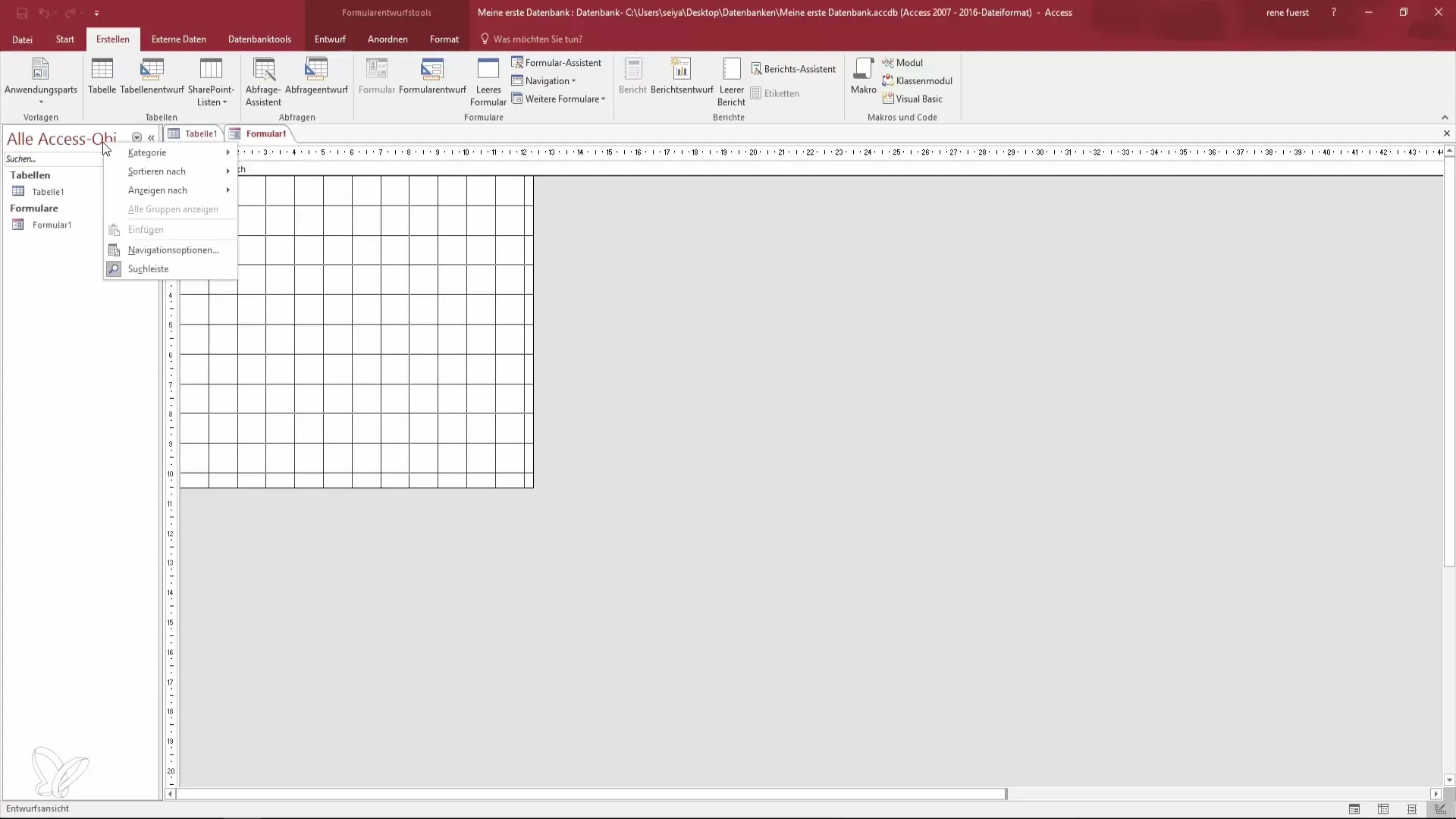
In conclusion, it is important to regularly update and save your database. Go to "File" and then to "Close" to save the current file and keep the database up to date.
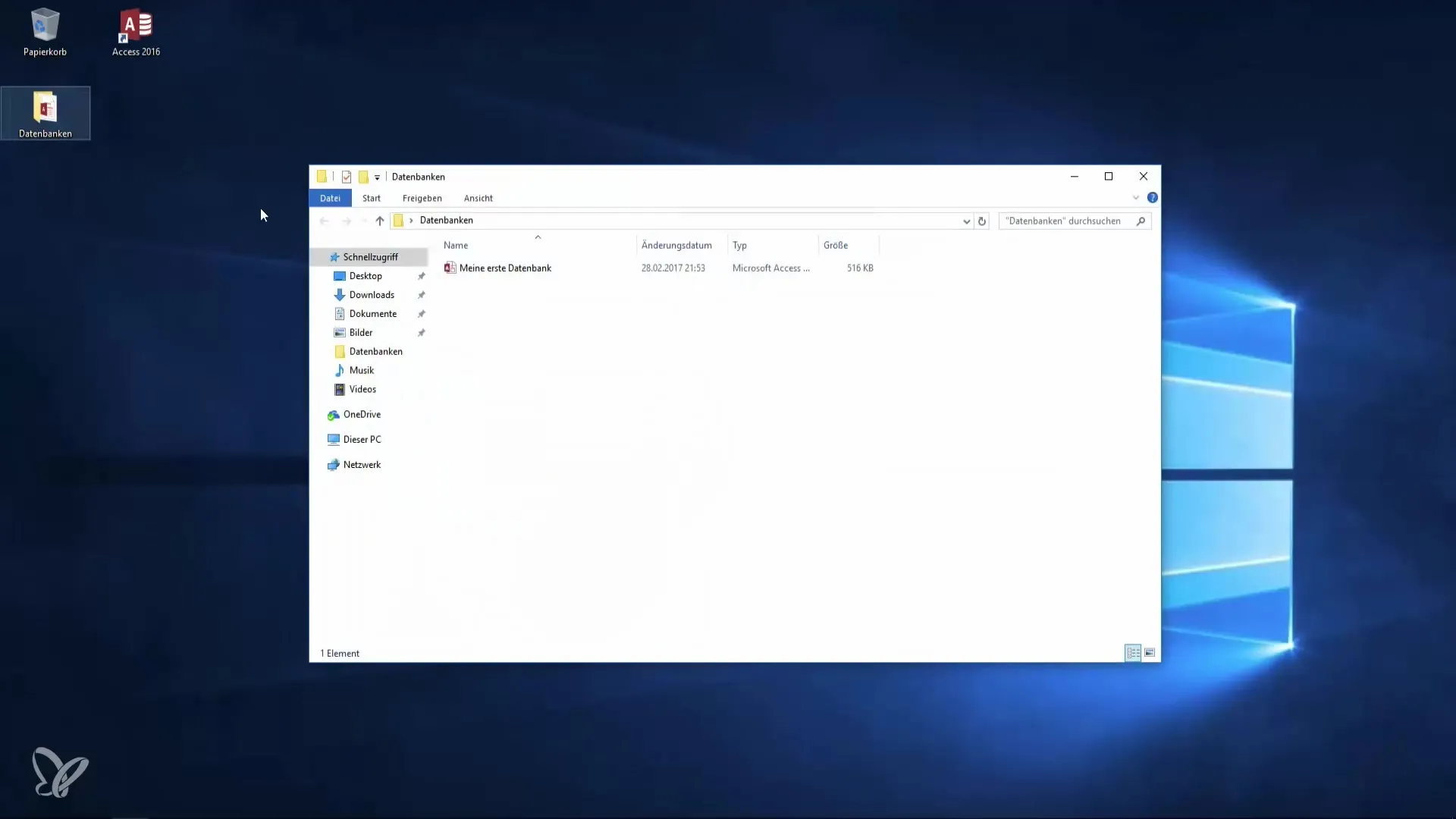
Summary – You’ve Created Your First Database in Access
In this guide, you learned how to create a simple database using Microsoft Access, set up tables, and ensure saving in various ways.
Frequently Asked Questions
How can I start a new database in Access?Start Access and select "New Blank Database".
What should I consider when saving my database?Make sure to save the file in a specific location and regularly save changes to avoid data loss.
How can I create tables in Access?Go to the "Create" tab and select "Table" to start a new table.
Can I change my database later?Yes, you can access the design view at any time to edit field names or add new fields.
How do I close the entire database?Click the "X" in the upper right corner of Access to close the entire application.


